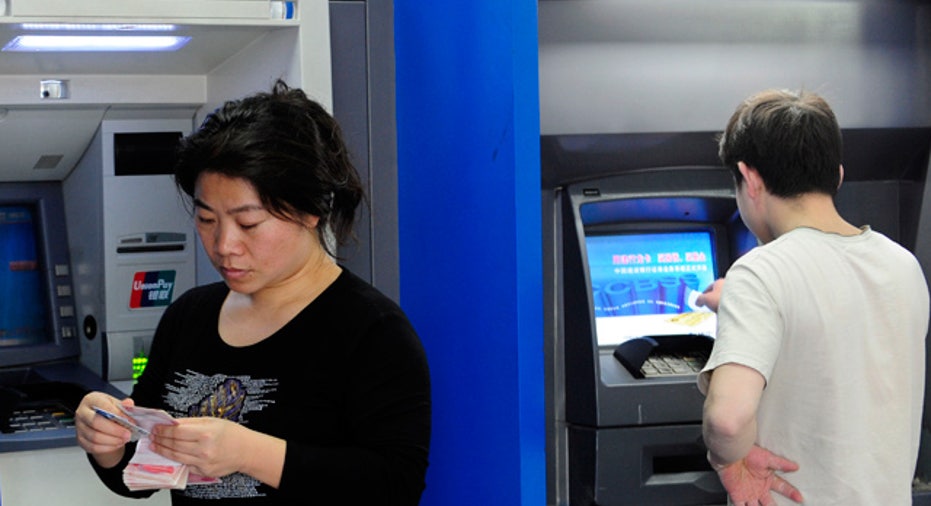Expert Q-and-A: A Snapshot of Banks in 2013

Since the very beginning of the financial crisis, critics have turned an accusing eye toward the U.S. banking system, blaming it for a host of ills. Risky loans and other shenanigans on the part of institutions "too big to fail" have been cited as major contributors to the downturn that continues to grip economies across the globe.
But banks also do many things right, providing "exceptional services to consumers at a phenomenally low cost," says Thomas Pieplow, associate professor of management at Athens State University in Athens, Ala.
Pieplow says today's banking industry faces many challenges, but also new opportunities, particularly in the world of mobile banking. He offers his thoughts in the following interview.
Why are interest rates on deposit accounts so low?
Deposit rates remain low, with (the prime rate) at 3.25% and long-term mortgage rates as low as 2.5%. Loan demand remains low and the economy remains sluggish. Until loan demand increases, banks will not be able to pay higher returns on deposits.
Interest rates paid are a direct reflection of the market. Savings accounts are one of the safest havens for money and when riskier options are paying less than 1%, it is natural that those safer sanctuaries would pay even less.
Why are banks charging more for checking accounts these days?
The increase being seen is a reflection of the additional risks banks incur due to crime.
Despite the fact that additional safeguards are in place, the traditional check still involves an element of trust, and the liability for a crime generally rests on the institution.
Negotiating worthless bank instruments is one of the most committed crimes we see, and the problem banks face is that they rarely are reimbursed fully for these offenses and instead must "eat" the loss.
The good news is that banks still offer a host of checking options that are free to consumers. However, they require higher average balances, additional accounts and other more robust activity between the bank and the consumer. These are conditions found in the lowest-risk customers.
Many smaller banks continue to offer free checking accounts for their clients. Diminishing interest rate spreads between loans and deposits have driven many banks to look for ways to increase noninterest revenue. Increased regulatory expenses and Federal Deposit Insurance Corp. fees have also contributed to the need for more fee income.
Nearly five years after the financial crisis, are American banks any safer?
That is a great question and one I believe the jury is still out on. It is clear that there are additional safeguards in place and that government oversight has taken on tighter observation of banks' activities. The fact is there will always be risks when investing with banks, and it is critical that consumers understand there are no absolutes.
But a robust system of checks and balances, disincentives to abnormally risky behavior, and prosecution of financial crimes certainly provides a framework where consumers should not worry. But the question remains, "Have we reached the proper balance of oversight without adding undue and burdensome requirements on banks that negate their profitability and capacity to thrive in a capitalistic system?"
It appears that the majority of weak bank assets have been identified and the sufficient loss reserves are in place. My sources in the banking industry estimate that they spend 20% to 25% of their time and resources dealing with regulators and activities to be compliant.
What do you think should be done about some banks being "too big to fail"?
Outside of the framework cited above, I would not implement anything different on those larger banks. Based upon all my reading, they provide exceptional services to consumers at a phenomenally low cost. Just as Wal-Mart capitalizes on their size to provide what consumers want, many of these large banks are also finding ways to provide consumers with services they want, using the efficiencies gained through their size.
This is also where smaller banks are finding a competitive advantage. Many times with larger institutions, decision-makers are four to five levels away from the client. Instead, smaller institutions are providing consumers with a resident presence that offers relatively simple decisions to be made locally. For those consumers (who are) not technically savvy, they like having a local institution with an organic presence.
Large and small banking institutions are filling a market need, and both are satisfying somewhat different needs of their clients.
What trends do you see in banking going forward?
Clearly, mobile banking is the next frontier. And though I cannot outline specific technologies or techniques we will see, mobile platforms will undergird it. The iPad and iPhone account for 72% of Apple's revenue today, yet neither of these could be bought five years ago.
The challenge I do see, and it is not unique to the banking industry, is in the area of information assurance, or "cyber" operations. We can no longer rest assured we are protected if we have the latest virus protection loaded, or we change our passwords every six months. Nothing will stem this growth faster than if consumers lose trust in virtual operations, and they cannot be provided (with) adequate protection for their transactions.
Claes Bell, senior banking analyst and writer for Bankrate.com, contributed the questions for this interview.
Copyright 2013, Bankrate Inc.